New academic calendar brings new faces to the McIntosh lab
We have two new lab members whom have just recently joined us. As a means of introducing them, here we share with you an introduction to each
FORD BURLES
visiting Postdoc
I completed my graduate work at the University of Calgary, investigating the role of the retrosplenial cortex and posterior cingulate in spatial orientation and navigation. Specifically, I have identified a potential ventral-dorsal functional specialization within the posterior cingulate for the encoding and recall of spatial information, respectively. I also manage gettinglost.ca, a forum and online platform with a variety of interactive spatial orientation tasks.At the McIntosh lab, I will be leveraging The Virtual Brain and large neuroimaging datasets to evaluate low dimensional manifold models of brain activity. In the future, I am hoping to apply these methods to my projects investigating the neural correlates of Developmental Topographical Disorientation (a developmental disorder characterized by the lack of spatial orientation skills with no gross brain damage or other cognitive or neurological deficit) as well as understanding the effects of long-duration spaceflight on the brain and spatial orientation behaviours (more information about this project here: Canadian Space Agency: Wayfinding).
Burles F, Umiltå A, McFarlane L, Potocki K, Iaria G (2018) Ventral-Dorsal functional contribution of the posterior cingulate cortex in human spatial orientation: A meta-analysis, Frontiers in human neuroscience, 12, 190, https://doi.org/10.3389/fnhum.2018.00190
——— GOOGLE SCHOLAR PAGE ———
PHILLIP JOHNSTON
GRADUATE STUDENT
“As a new graduate student, I’m thrilled to be taking the first step in my career at the McIntosh Lab. In my short time here, I’ve already been hugely inspired by the innovation and diversity of perspective present in this lab. ”
In terms of my own background, I received my bachelor’s degree in Neuroscience and Cognitive Science from the University of Toronto. While pursuing my degree, I was fortunate enough to take part in a rather eclectic set of research projects, ranging from cardiovascular psychophysiology to investigating whether mystical experiences lead to a more meaningful life. It was during this time that I decided I wanted to combine computational modelling (a new interest of mine) with my most long standing fascination in science: multisensory perception. Broadly speaking, I aim to investigate how our individual perceptual experiences sculpt our behaviour, cognition, and social interactions throughout our lives.
As part of the McIntosh Lab, I hope to leverage the power of The Virtual Brain to model multisensory integration and map the network properties that support it, with the two-part goal of furthering basic understanding of the integration process itself, as well as the etiology of brain conditions in which this process goes awry.
Outside of the lab I am an active musician and music producer, with a love of sound design inspired in part by my perceptual research. As such, I feel extremely fortunate to find myself among researchers who appreciate the art in science, and vice versa.
With that, I’d like to take this opportunity to thank everyone at the McIntosh Lab for welcoming me warmly, and I look forward to seeing what the next few years will bring!





